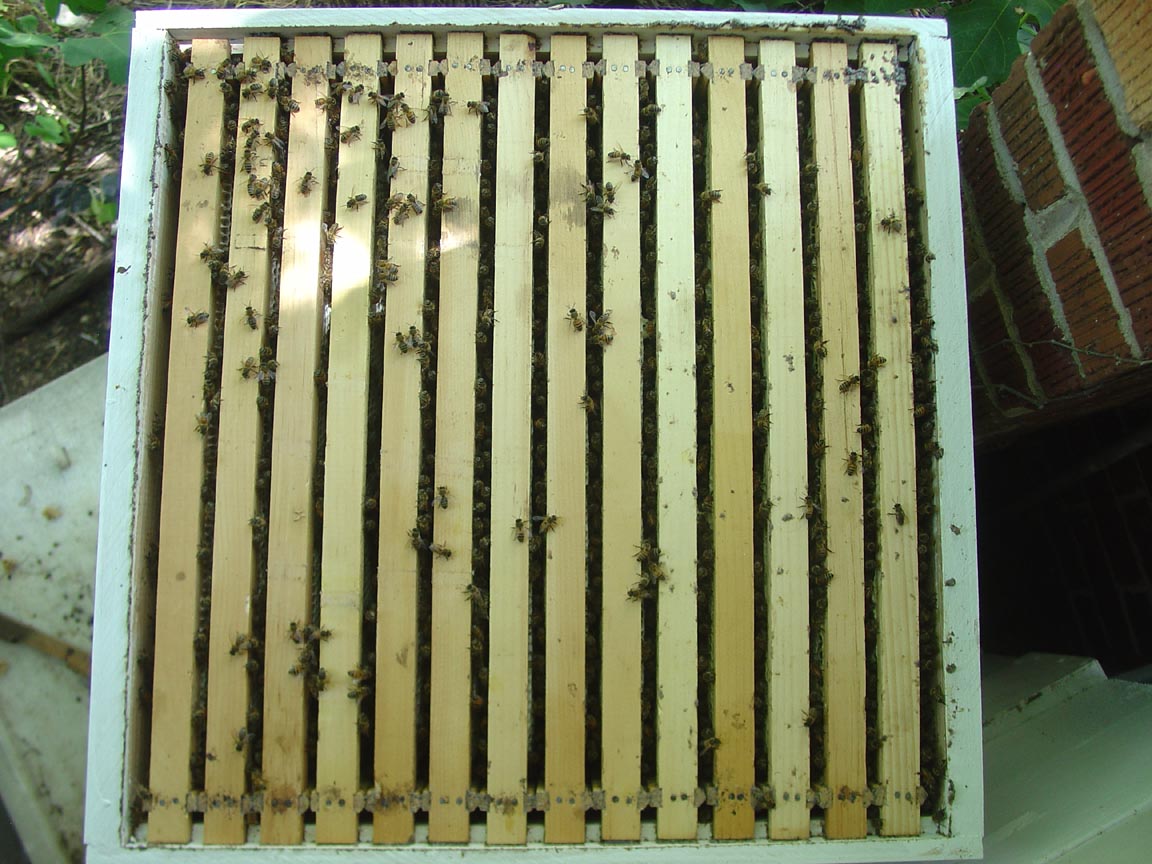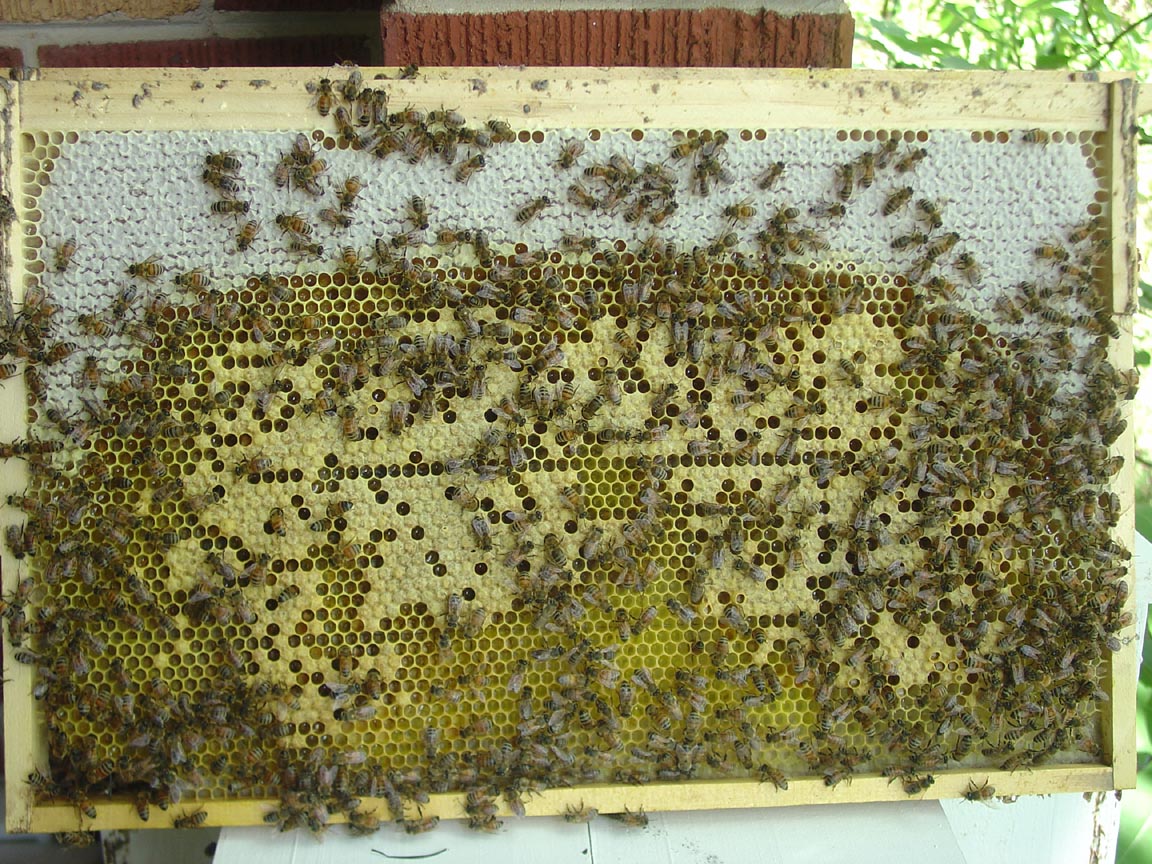This topic has been debated for at least 150 years. I wrote up an article about it several years ago and have updated it a few times since.
Narrow frame spacing is a viable way of keeping bees, but it requires adjustments to the way they are kept. Narrow frames increase swarming tendency! Also, there is less honey in a box with frames on 31mm (or 32mm) spacing. This should be obvious when you consider that there is bee space around another frame. That bee space reduced the volume of stored honey. I'm going to post the information I wrote so perhaps you can argue a bit more over what it does or does not do. This was originally written about 25 years ago though it was posted on Beesource in 2010.
There have been several articles published over the years advocating variants of the standard measurements of a frame. The January 1995 Bee Culture article titled Bee Space discussed using narrow gauge frames and referenced an article in the January 1977 issue. I first subscribed to Gleanings in Bee Culture in 1977. The article by Charles Koover plus financial restrictions inspired me to manufacture equipment, including narrow gauge frames. I went through three frame designs before I settled on the correct modifications. I have approximately 20 hive bodies using the narrow frames and have used them for 32 years. I also have used standard frames extensively for comparison. Here are my conclusions regarding narrow gauge frames. (Update: I replaced all my bee equipment with square Dadant boxes with 32mm frames starting in 2016. There are 14 frames per box.)
Narrow gauge frames tend to bow and warp more easily during construction. This is because all the measurements for frame joints have to be reduced. The frame must be carefully cut to precise dimensions and assembled to hang straight and free. I glue and nail all frames to achieve this goal.
A comb which is even slightly bowed is unacceptable. The frames must be wired to obtain perfectly straight combs. Combs built in unwired frames will result in one side being deep and the other shallow. The bees will only raise brood in the deep side. Pins and other methods do not support the foundation adequately to prevent this bowing. Plastic core foundations tend to bow too much over time though some of the newer heavy base wax coated plastic works fairly well.
Drone cells cannot be permitted because they will usually be at the frame's top or bottom edge. When a comb is removed from the hive body, bees will be crushed potentially killing the queen and causing excessive stinging because of the alarm pheromone released by the crushed bees. I renew the combs after about 5 years of use by cutting out the old comb and putting in new foundation. I use slatted rack bottom boards to reduce comb chewing and removal in the critical areas of the frame. The result is solid worker cell size combs which are easy to handle. (update: Bees will tear down comb to make room for drone cells. I put a single shallow frame in each box so they can build drone comb off the bottom of the frame. This satisfies their instinct to rear drones.)
Narrow gauge frames with 11 frames per super for honey production are useless because uncapping is almost impossible. I use and prefer 9 frames in a honey super. The narrow gauge frames can be spaced to give this density. The advantage obtained with nine narrow gauge frames in a super is that uncapping is easier because there are almost no low spots in the comb surface. (Update: Since I converted to square Dadant equipment I use 12 frames per square super.)
The structure of the winter cluster is different on narrow guage frames. There is room for only two layers of bees between the combs as compared with three layers in standard frames. A winter cluster on narrow frames is therefore slightly larger for a given number of bees than in standard frames. This is especially important in the early spring when brood rearing begins because the cluster covers more comb surface. This allows brood rearing to expand earlier.
Eleven narrow frames full of honey weigh less than ten standard frames full because of the bee space around the 11th frame. The combination of expanded winter cluster and lower hive body weight will result in a colony that starves out in the early spring unless two or more hive bodies are used for wintering. This provides cluster crossover space and enough honey for successful wintering. (Update: Square Dadant hives have more than enough room for successful wintering in a single box.)
Spring buildup with narrow gauge frames is only slightly improved in my area because of weather conditions. The first pollen from willow is in early February. The main flow starts about April 20th and peaks from the first to the twentieth of May. This means I have 9 to 11 weeks for spring buildup from the first incoming pollen to the start of the main nectar flow. With such a long buildup period, swarming is a significant problem whether using narrow or standard frames. The bees build up faster with narrow frames which means swarm control measures are required about 2 weeks earlier than on standard frames.
The primary advantage under these conditions is that two deep hive bodies can contain the brood of the most prolific queen. I have had up to 18 frames of brood, larvae, and eggs from an exceptional queen. The two outside frames in the hive body were full of pollen and honey and all 9 inner frames were at least 70 percent full of brood. With standard frames, this amount of brood would partially occupy 3 hive bodies, but with narrow gauge frames, only two hive bodies are required. (Update: I had 12 frames of brood in a square Dadant hive this past summer. This worked out very well for honey production. I estimate about 70,000 to 80,000 total cells of brood.)
One significant advantage is that when made to the correct dimensions, bridge and brace comb is almost nonexistent. Please note that some bee strains are excessive at building bridge and brace comb. The narrow gauge frames will reduce, but not eliminate this tendency in these strains. (Update: this can't be emphasized enough. With proper spacing, there is much less tendency to burr things up.)
Would I recommend a wholesale change to narrow gauge frames? No, but only because bees on them are less forgiving of human errors. They have slight advantages over standard frames in daily operation. (Update: The advantages are significant enough that I eliminated all 35mm frames from my brood boxes.)
The standard hive body with standard frames has been proven in over 100 years of beekeeping. The only impetus that would cause us to change the size hive and frame we use today would be a dramatic change in the way we keep bees. Examples of such dramatic changes could be found in the operations of migratory beekeepers using pallet systems. They could use a square hive more effectively than the rectangular ones we use today. Also, if queens are bred to be more prolific with resultant higher honey production, the standard hive body and frame will show serious limitations.
Below is a pic of a box with 14 frames spaced at 32mm. Note the complete lack of burr and brace comb!
This is a partial frame of brood from the side of a cluster. The best I recall, this was the 3rd frame from the side in the box shown above.





















































